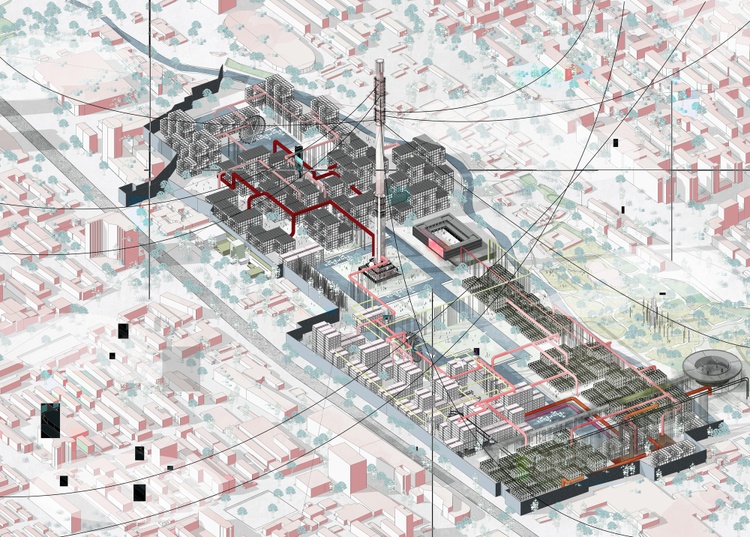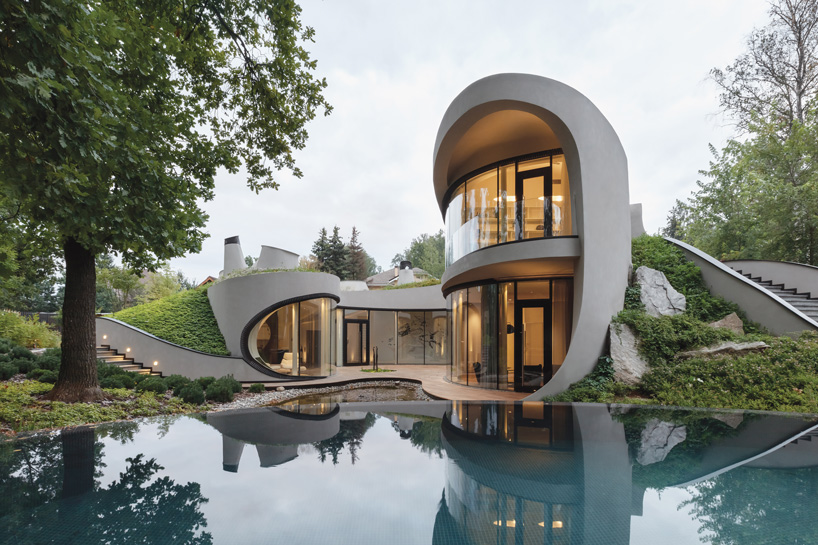The Effect of Technological Advancements on the Style Practices of Contemporary Architects
The rapid advancement of technological tools has actually considerably improved the style landscape for modern architects, fostering unprecedented degrees of innovation and sustainability. The assimilation of Building Information Modeling (BIM), parametric style, and expert system has not only streamlined cooperation amongst diverse groups yet likewise redefined job execution. As architects accept these improvements, they are confronted with complex obstacles that might influence their creative procedures. Discovering these dynamics exposes a nuanced interaction in between technology and standard layout methodologies, triggering a more detailed assessment of what the future holds for building methods.
Advancement of Architectural Equipment
Exactly how have architectural devices transformed the layout and construction procedures over the centuries? The advancement of architectural devices has significantly impacted the efficiency, precision, and imagination of layout and building. In old times, designers relied on fundamental tools such as plumb bobs, determining rods, and fundamental geometry to create frameworks. These tools laid the foundation for very early building practice, enabling the building of legendary structures, albeit with restrictions in precision and complexity.
With the advent of the Renaissance, the introduction of the compass and the protractor noted a critical shift. These devices allowed designers to achieve better precision in their layouts, facilitating the appearance of even more intricate and in proportion structures. The Industrial Change better revolutionized architectural exercise with the introduction of mechanized devices and materials, enabling larger and a lot more enthusiastic tasks.
In the 20th century, the advancement of computer-aided layout (CAD) software transformed the landscape as soon as again, supplying designers with unmatched capacities in modeling and visualization. Today, progressed devices such as Building Details Modeling (BIM) and parametric layout software remain to press the borders of architectural innovation, enabling a much more integrated strategy to layout and construction procedures.
Improved Collaboration in Layout
As innovation proceeds to develop, enhanced partnership in style has come to be a keystone of modern architectural technique. The assimilation of electronic devices such as Building Information Modeling (BIM), cloud-based systems, and advanced visualization software application has actually transformed the means engineers, designers, and stakeholders engage throughout the layout process. These devices facilitate real-time communication, enabling teams to share concepts, adjustments, and responses immediately, regardless of geographical place.

Additionally, interdisciplinary partnership has been structured through these technical innovations, enabling architects to function more carefully with other specialists, such as metropolitan planners and environmental professionals. The outcome is a more natural strategy to make that thinks about various perspectives and know-how. Eventually, boosted cooperation in design is not just a trend; it is important for creating cutting-edge, practical, and aesthetically pleasing style in a significantly complex globe.
Sustainability With Modern Technology
Sustainability in architecture has increasingly become intertwined with technological Get More Information innovation, driving the market towards environmentally responsible methods - cda architects. Contemporary designers are leveraging sophisticated technologies to minimize ecological influence while improving the efficiency of structures. One popular example is making use of Building Details Modeling (BIM), which permits for specific preparation and source allotment, minimizing waste during building and construction and promoting energy performance throughout a structure's lifecycle
In addition, wise products and energy-efficient systems are being incorporated right into layouts to enhance resource use. Technologies such as photovoltaic or pv cells and green roof harness renewable resource resources, adding to lowered carbon impacts. In addition, the application of fabricated intelligence in layout processes enables engineers to mimic and assess energy intake, leading decisions toward even more lasting end results.
The integration of have a peek at this site lasting innovations not only straightens with international ecological objectives but additionally fulfills an increasing demand from consumers for environmentally friendly solutions. As engineers embrace these innovations, the focus changes in the direction of producing spaces that are not just aesthetically pleasing however also functionally sustainable, thus redefining the standards of modern style. This way, innovation acts as a driver for sustainability, making it possible for architects to make structures that respect and boost the native environment.
Challenges in Execution
While technological innovations in design hold wonderful pledge for enhancing sustainability, their execution usually encounters considerable difficulties - cda architects. One main obstacle is the steep learning curve connected with new technologies. Architects and construction professionals may call for comprehensive training to efficiently make use of innovative software program and devices, which can delay project timelines and increase prices
Furthermore, the integration of arising innovations, such as Structure Info Modeling (BIM) and lasting materials, usually necessitates partnership throughout multidisciplinary teams. This partnership can be prevented by distinctions in experience, operations, and communication styles, leading to potential conflicts and inadequacies.
Financial constraints additionally redirected here make complex the fostering of cutting-edge innovations. Lots of architectural companies, especially smaller ones, may lack the sources to spend in innovative tools, limiting their ability to take on bigger firms that can afford such financial investments.
Furthermore, regulative structures and building regulations might not equal technological improvements, creating uncertainty and prospective conformity issues. This difficulty can prevent designers from fully embracing brand-new innovations, as the danger of non-compliance may surpass the advantages. Consequently, attending to these application challenges is vital for the successful assimilation of technical advancements in contemporary architectural practices.
Future Fads in Architecture
The challenges connected with the implementation of new technologies in design have actually prompted a reevaluation of future trends within the industry. As designers navigate concerns such as sustainability, urbanization, and social equity, they are increasingly adopting cutting-edge innovations to boost style effectiveness and environmental efficiency.
One famous pattern is the integration of artificial intelligence (AI) in the layout process. AI devices can assess vast datasets to notify layout decisions, enhancing both creative thinking and performance. Structure Details Modeling (BIM) continues to evolve, enabling real-time collaboration amongst stakeholders and assisting in streamlined task monitoring.
Sustainable style methods are also gaining energy, with architects focusing on flexible reuse and regenerative style principles that lessen source intake and waste. The consolidation of wise materials and renewable resource resources will additionally boost the strength of buildings in the face of climate adjustment.

Conclusion
Technical innovations have actually considerably improved architectural layout techniques, helping with improved precision, cooperation, and sustainability. The integration of devices such as Building Information Modeling and parametric design software application, together with expert system and clever materials, encourages architects to deal with complicated obstacles better. While application may present particular barriers, the continued evolution of these modern technologies promises to drive technology in architecture. Future trends will likely further emphasize sustainability and performance, inevitably redefining the developed environment.